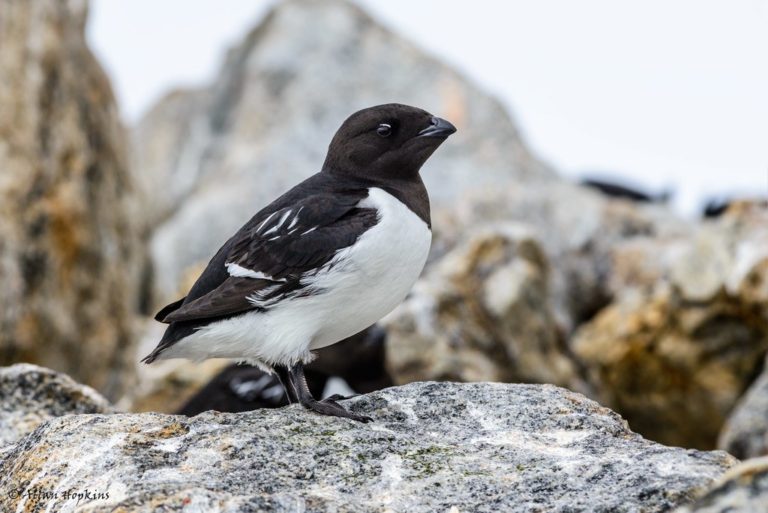Birdfinding.info ⇒ The Little Auk, as it is known in Britain, is locally abundant on its remote, high arctic breeding grounds and common as a winter visitor to offshore waters of northern Europe and eastern North America. In the U.S. it is seen regularly at New England seawatches such as Cape Ann and Race Point, and on winter pelagic trips out of ports south to Virginia Beach, Oregon Inlet, and Hatteras.
Dovekie
Alle alle
Breeds in the high arctic. Winters in cold waters of the North Atlantic.

Principal distribution of the Dovekie. © Xeno-Canto 2022
Breeding. Breeds from March to September in large colonies on sea cliffs and interior montane scree slopes and nunataks on Greenland, Baffin Island, Iceland, Svalbard, Jan Mayen, Franz Josef Land, Novaya Zemlya, and Severnaya Zemlya.
Adults return to colonies between March and May, and lay their eggs from mid-June into early July. Juveniles depart in late August and early September.
The bulk of the global population breeds in the Thule region of northwestern Greenland: estimated at >10 million pairs. The second-largest concentration breeds in Svalbard: ~500,000 pairs. Similar numbers are thought to breed along the east coast of Greenland.

Dovekies on their breeding grounds in Svalbard. (July 2, 2014.) © Allan Hopkins
Small numbers have been detected regularly in western Alaska, where it has been found breeding on Little Diomede Island in the Bering Strait.
There are two isolated summer records from the Pacific Ocean: Prince William Sound, Alaska (July 8, 1998) and Sharp Bay, Campania Island, British Columbia (August 21, 2013).
Nonbreeding. Winters across upper latitudes of the North Atlantic—including the Labrador, Greenland, Norwegian, and Barents Seas—north to the ice-pack, and south to North Carolina and essentially throughout the North Sea.

Dovekie in nonbreeding plumage, apparently disoriented, having landed on a road. (Charlestown, Rhode Island; January 12, 2013.) © Susan Talbot
Smaller numbers winter irregularly in western waters of the British Isles south to the Bay of Biscay. Sporadically reported in winter south to Florida, Bermuda, the Azores, and the Baltic Sea.
Usually remains some distance offshore, but sometimes appears in inshore waters, often remaining in the same area for several days. Flocks occasionally “wreck” on beaches, roads, or fields, usually driven by strong storms. Some wrecks involve large numbers and extend several miles inland.
The small Bering Strait population presumably winters in the Bering Sea. Sightings are regularly reported in spring and fall by observers on St. Lawrence Island and the Pribilofs.
Exceptional vagrants have been recorded from the Great Lakes, the northern Mediterranean, and points deep in the interiors of Europe and North America.
Identification
Distinctive: a plump, thrush-sized auk with a short, thick neck and a stout, finchlike bill. No other small auks occur regularly in the Atlantic Ocean or high arctic, but in the Chukchi and Bering Seas it is potentially confused with several murrelet species and Least Auklet.
Breeding plumage is crisply defined: black upperparts and chest contrast with white underparts. Has several white streaks on the scapulars and a white wingbar (white secondary tips).

Dovekie in breeding plumage. (Vestpynten, Svalbard; July 20, 2011.) © Tom Bedford

Dovekie in breeding plumage. (Svalbard; June 16, 2017.) © A. Emmerson
Nonbreeding plumage is similar to breeding, except that the neck and chest are mostly white and the borders between white and black are smudgy. The face remains mostly black, but the white of the neck extends up behind the eye forming a prominent ear-patch or partial collar across the hindcrown.

Dovekie in nonbreeding plumage, showing mostly black face with white patch behind the eye. (Cape Sable Island, Nova Scotia; January 19, 2018.) © Mark Dennis
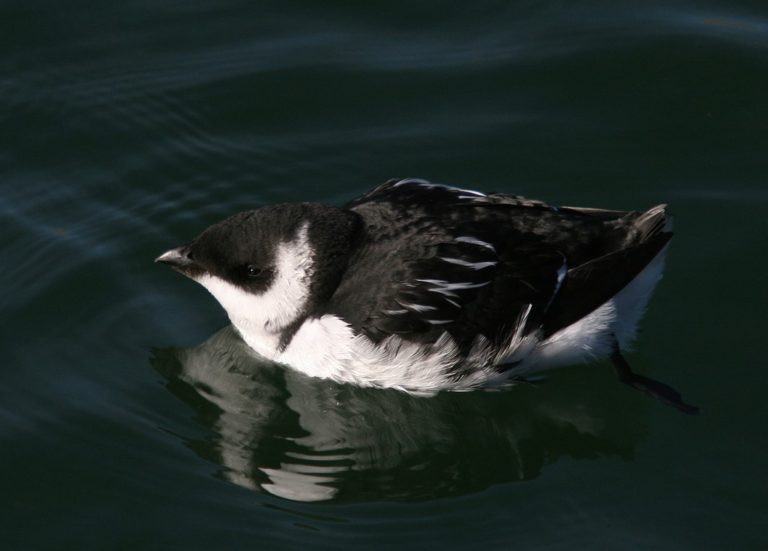
Dovekie in nonbreeding plumage, showing mostly black face with white patch behind the eye. (Helgoland, Germany; October 13, 2007.) © Christoph Moning
In flight, it resembles a black-and-white bullet borne on narrow, whirring wings. The underside of the wing is mostly dark-gray.
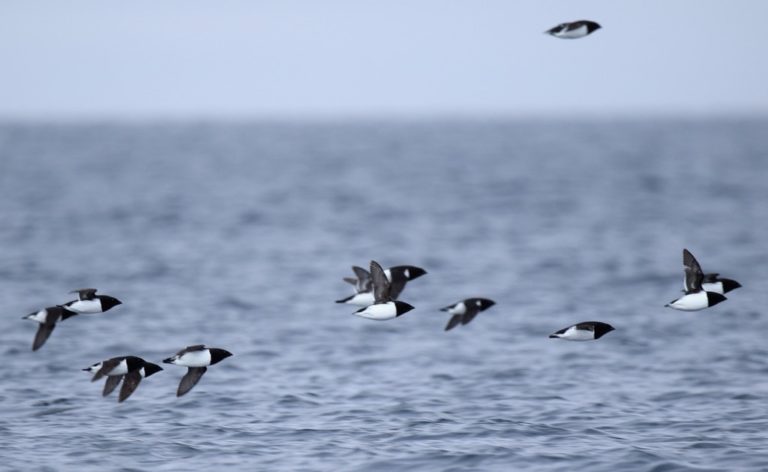
Dovekies in breeding plumage, showing flight profile and dark-gray underwings. (Svalbard; June 16, 2017.) © A. Emmerson
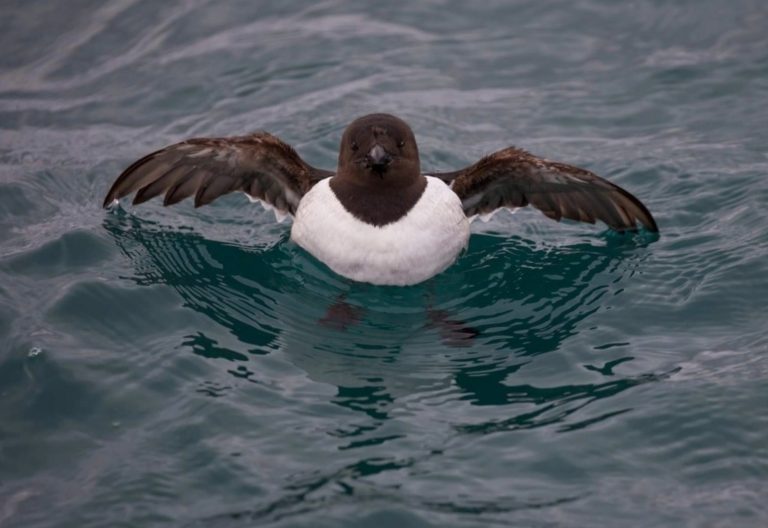
Dovekie in breeding plumage, showing dark-gray underwings. (Svalbard; July 25, 2021.) © David Wolberg
Notes
Polytypic species consisting of two recognized subspecies.
More Images of the Dovekie
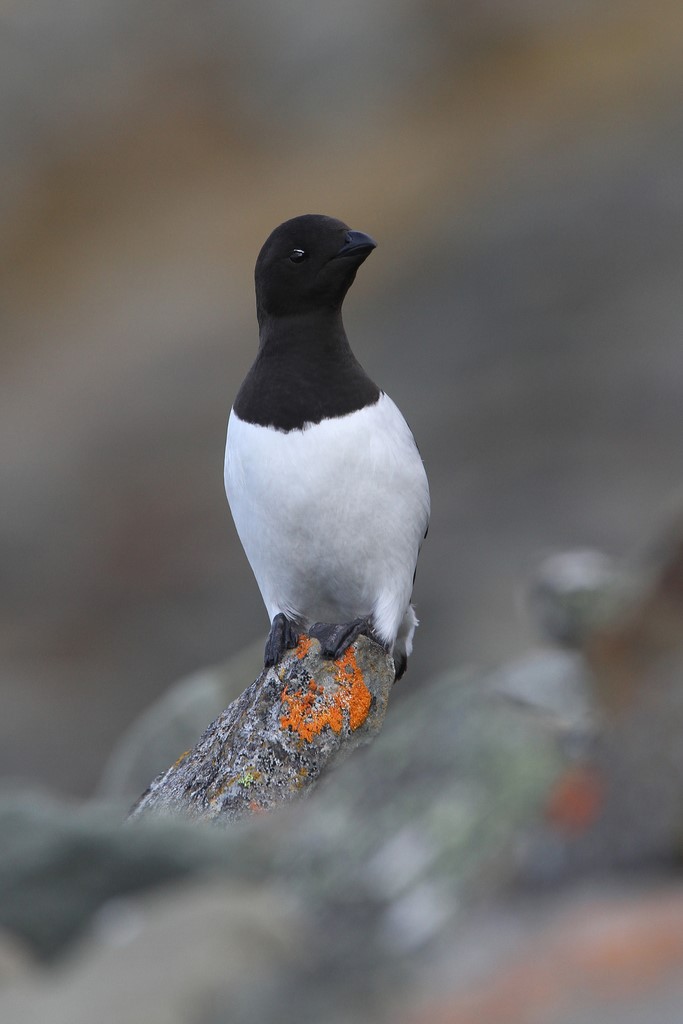
Dovekie in breeding plumage. (Alkekongekoloni, Vestpynten, Svalbard; June 14, 2015.) © Christoph Moning

Dovekie in breeding plumage. (Alkekongekoloni, Vestpynten, Svalbard; June 14, 2015.) © Christoph Moning

Dovekie in breeding plumage. (Alkekongekoloni, Vestpynten, Svalbard; June 14, 2015.) © Christoph Moning
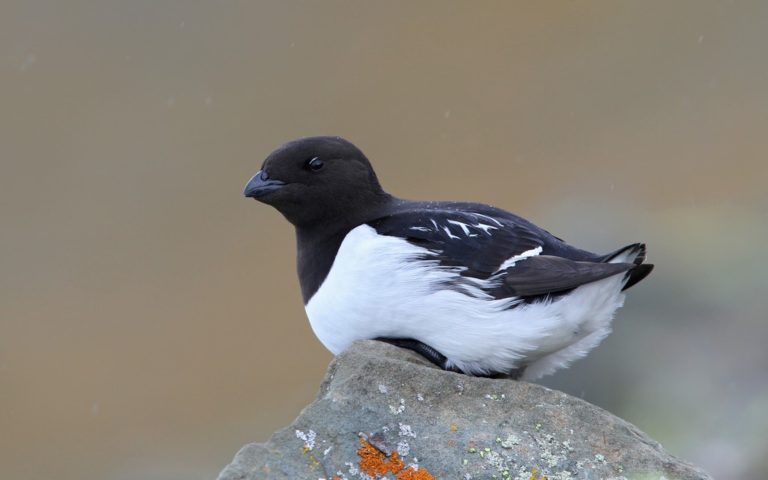
Dovekie in breeding plumage. (Alkekongekoloni, Vestpynten, Svalbard; June 14, 2015.) © Christoph Moning
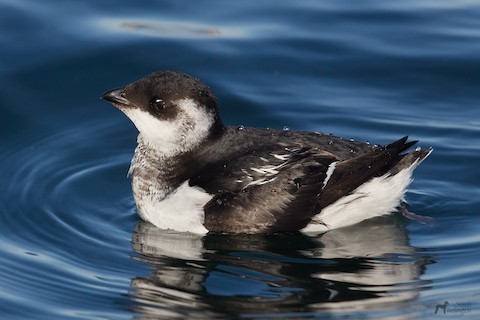
Dovekie in nonbreeding plumage, showing mostly black face with white patch behind the eye. (Provincetown, Massachusetts; January 21, 2018.) © Susan Wellington
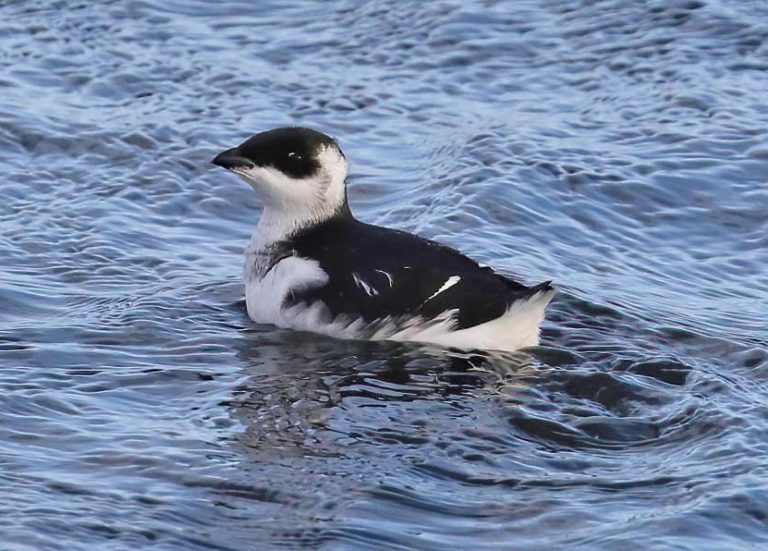
Dovekie in nonbreeding plumage, showing mostly black face with white patch behind the eye. (Clark’s Harbour, Nova Scotia; January 19, 2020.) © Mark Dennis

Dovekie in nonbreeding plumage. (Wells-next-the-Sea, Norfolk, England; November 28, 2021.) © Daniel Field
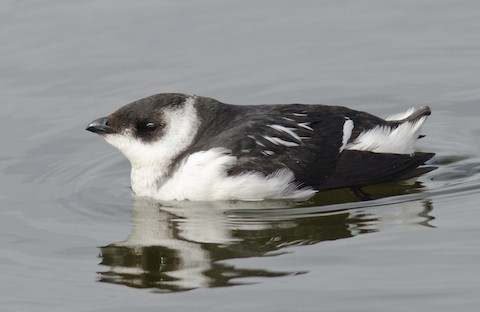
Dovekie in nonbreeding plumage. (Cape Sable Island, Nova Scotia; February 15, 2014.) © Alix d’Entremont
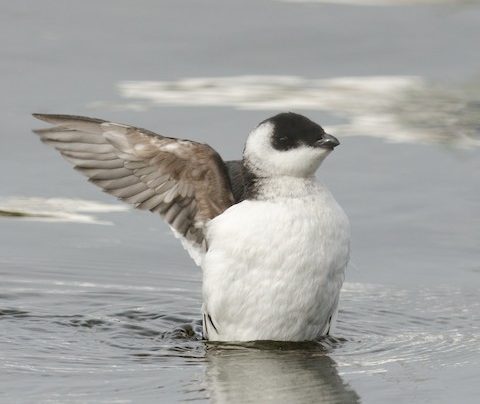
Dovekie in nonbreeding plumage, showing dark-gray underwing. (Cape Sable Island, Nova Scotia; February 15, 2014.) © Alix d’Entremont
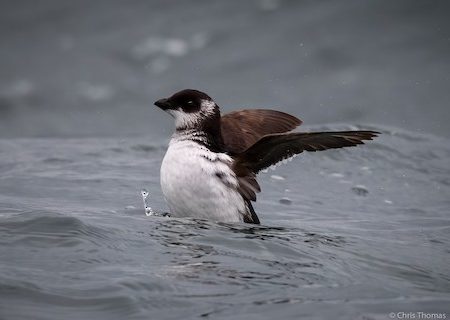
Dovekie in nonbreeding plumage, showing dark-gray underwing. (Offshore from Oregon Inlet, North Carolina; February 28, 2021.) © Chris Thomas
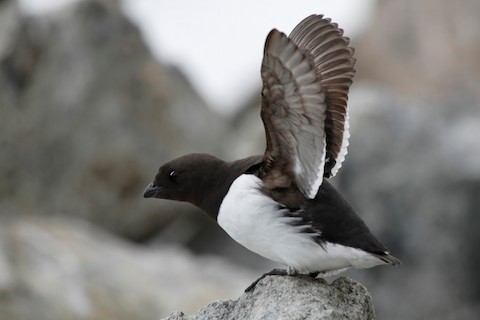
Dovekie in breeding plumage, showing dark-gray underwing. (Fuglesangen, Svalbard; August 5, 2010.) © Christophe Gouraud
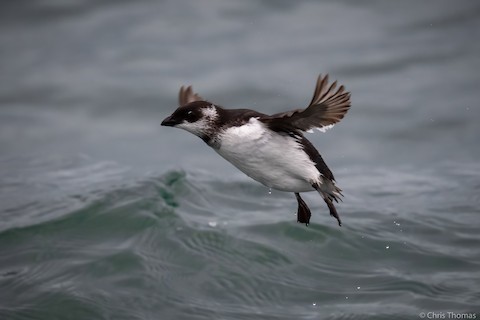
Dovekie in nonbreeding plumage. (Offshore from Oregon Inlet, North Carolina; February 28, 2021.) © Chris Thomas
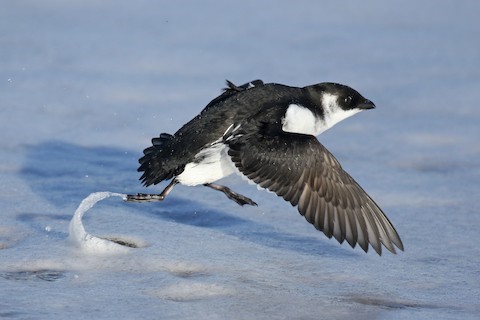
Dovekie in nonbreeding plumage. (Cley-next-the-Sea, Norfolk, England; October 29, 2019.) © Dominic Mitchell
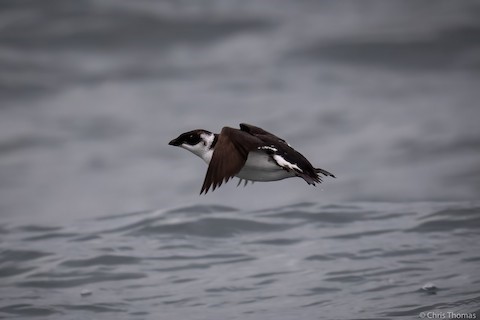
Dovekie in nonbreeding plumage. (Offshore from Oregon Inlet, North Carolina; February 28, 2021.) © Chris Thomas
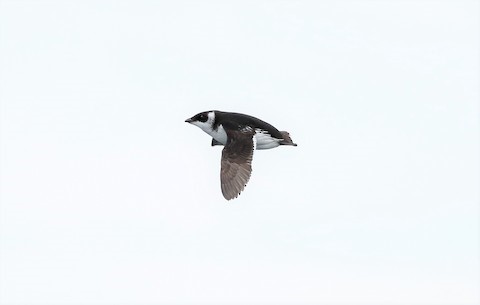
Dovekie in nonbreeding plumage. (Offshore from Oregon Inlet, North Carolina; February 16, 2020.) © Peter Flood

Dovekie in nonbreeding plumage. (Offshore from Oregon Inlet, North Carolina; February 16, 2020.) © Michael Todd
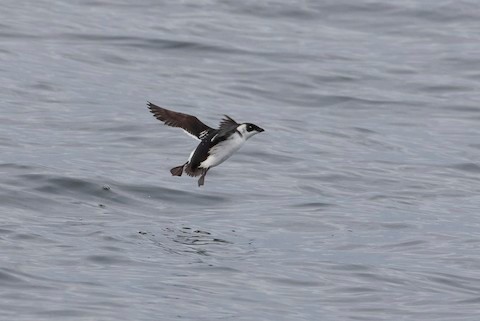
Dovekie in nonbreeding plumage. (Offshore from Oregon Inlet, North Carolina; February 16, 2020.) © Michael Todd

Dovekie flock in flight on breeding grounds. (Svalbard; June 10, 2015.) © Christoph Moning
References
Alderfer, J., and J.L. Dunn. 2014. National Geographic Complete Birds of North America (Second Edition). National Geographic Society, Washington, D.C.
BirdLife International. 2018. Alle alle. The IUCN Red List of Threatened Species 2018: e.T22694837A131932114. https://dx.doi.org/10.2305/IUCN.UK.2018-2.RLTS.T22694837A131932114.en. (Accessed January 1, 2022.)
Brazil, M. 2009. Birds of East Asia. Princeton University Press.
eBird. 2022. eBird: An online database of bird distribution and abundance. Cornell Lab of Ornithology, Ithaca, N.Y. http://www.ebird.org. (Accessed January 1, 2022.)
Gaston, A.J., and I.L. Jones. 1998. The Auks: Alcidae. Oxford University Press.
Harrison, P. 1983. Seabirds: An Identification Guide. Houghton Mifflin, Boston.
Howell, S.N.G., and K. Zufelt. 2019. Oceanic Birds of the World. Princeton University Press.
Sibley, D.A. 2014. The Sibley Guide to Birds (Second Edition). Alfred A. Knopf. New York.
Svensson, L., K. Mullarney, and D. Zetterström. 2009. Birds of Europe (Second Edition). Princeton University Press.
Xeno-Canto. 2022. Little Auk – Alle alle. https://xeno-canto.org/species/Alle-alle. (Accessed January 1, 2022.)
